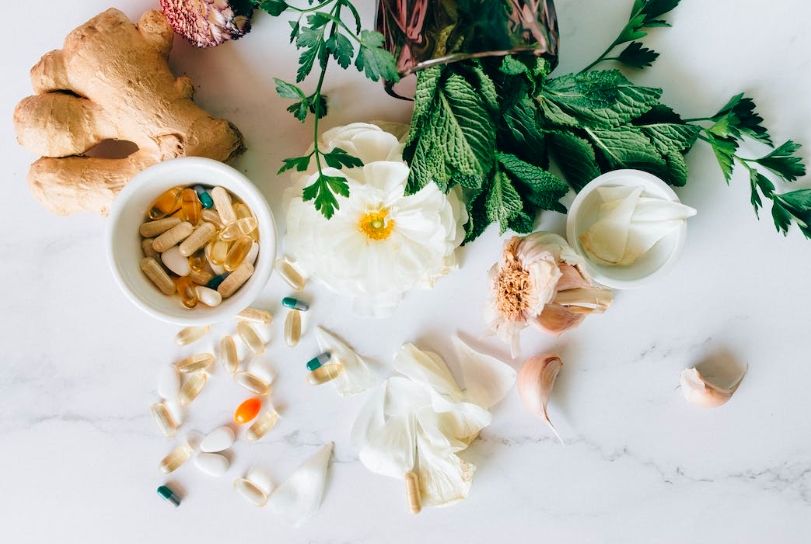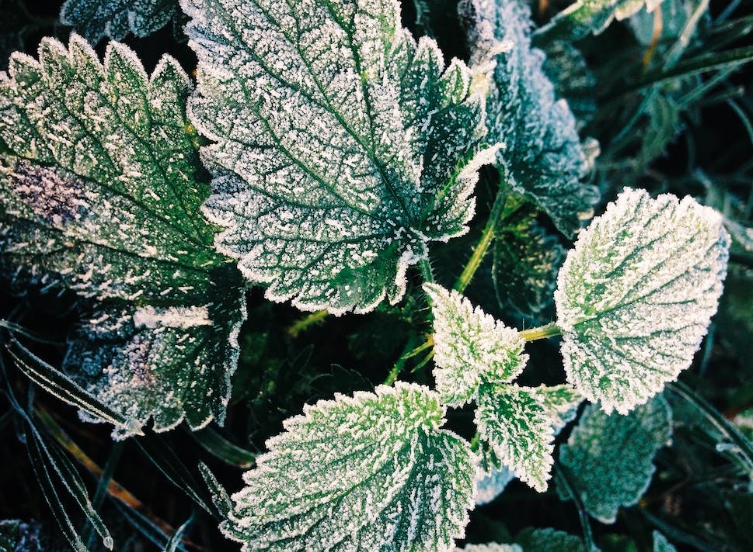Herbal and medicinal gardening is a centuries-old practice that involves the growing, harvesting and use of medicinal plants for the purpose of healing and maintaining health. The use of herbal medicine has been documented throughout history, as far back as ancient Egypt and China, where herbal remedies were used to treat a variety of ailments. Herbal medicine has also been used in many cultures throughout the world, and is still widely used today.
Herbal healing and medicinal gardening are based on the belief that the natural healing properties of plants can be used to treat many common illnesses, discomfort and diseases. This form of healing is often preferred to conventional medicine due to its natural, holistic approach and the fact that many of the remedies are inexpensive and easy to make. Herbal healing is also becoming more widely accepted by the medical community, as studies have shown that certain herbal ingredients can be beneficial for treating and preventing certain conditions.
Herbal healing has many benefits, including being a safe and natural way to treat many common ailments, as well as providing relief from symptoms of chronic conditions. Additionally, medicinal gardening is an enjoyable, therapeutic activity that can be done in your own backyard. Gardening also provides an opportunity to learn more about the medicinal properties of plants and the different ways they can be used. Finally, herbal and medicinal gardening helps to reduce our dependence on pharmaceuticals and provides an alternative to conventional medicine.
Popular Medicinal Plants and Herbs
Traditional medicinal plants and their uses
Traditional medicinal plants have been used since ancient times to treat a wide range of illnesses and diseases. Some of the most commonly used plants include aloe vera, which is used to treat skin conditions, burns, and wounds; chamomile, which is used to relieve inflammation, and aid in digestion; and echinacea, which is used to boost the immune system and reduce the severity of colds and flus. Other popular plants used in traditional medicine include garlic and ginger, which are used to reduce inflammation and improve circulation; lavender, which is used to treat headaches and insomnia; and turmeric, which is used to reduce inflammation and improve skin health.
Non-traditional medicinal plants and their benefits
Non-traditional medicinal plants are gaining in popularity for their unique healing properties. Some of the most commonly used plants include ashwagandha, which is used to reduce stress and anxiety; holy basil, which is used to boost the immune system and reduce inflammation; and ginseng, which is used to improve energy and stamina. Other non-traditional medicinal plants that are gaining in popularity include maca, which is used to improve energy, reduce inflammation, and improve fertility; moringa, which is used to reduce inflammation and improve digestion; and reishi mushrooms, which are known to boost the immune system and reduce stress.

Common herbs and spices used for healing
Herbs and spices are some of the most commonly used ingredients in the traditional medicine world. Common herbs used for healing include parsley, which is used to reduce inflammation and aid in digestion; rosemary, which is used to improve memory and circulation; and basil, which is used to reduce inflammation and improve skin health. Common spices used for healing include cinnamon, which is used to reduce inflammation, boost the immune system, and improve circulation; turmeric, which is used to reduce inflammation and improve skin health; and ginger, which is used to reduce inflammation and improve circulation.
Basic Techniques in Herbal Gardening
Soil Preparation and Composition:
Soil preparation is the most important step in herbal gardening. It involves the selection of the right type of soil needed for the success of the herbs. It is necessary to have a soil that is rich in organic materials and nutrients, such as compost, manure, and topsoil. The pH levels of the soil should also be checked and adjusted as necessary to ensure that the herbs will be able to absorb all the necessary nutrients. It is also important to ensure that the soil is free from pests and diseases, as this can cause a lot of damage to the herbs.
Propagation Methods:
Propagation is the process of creating new plants from existing ones. Herbal gardeners can propagate their herbs through several methods, such as seed sowing, division, and cuttings. Seed sowing is the most common and easiest way to propagate herbs, while division is used to propagate larger herbs, such as mint and oregano. Cuttings are used to propagate plants that do not produce seeds, such as lavender and rosemary. It is important to ensure that the proper techniques are used when propagating herbs, as this will help ensure the success of the new plants.
Proper Watering and Fertilizing Techniques:
Watering is an essential part of herbal gardening, as it ensures that the herbs receive the necessary water and nutrients needed for growth. It is important to ensure that the herbs are watered regularly, as this will help promote healthy growth and prevent the plants from drying out. Fertilizing is also an important part of herbal gardening, as it provides the herbs with the necessary nutrients for healthy growth. It is important to use the right type of fertilizer for the herbs, as this will ensure that the plants are getting all the necessary nutrients.
Common Pests and Diseases Management:
Herbal gardeners must also be aware of common pests and diseases that can affect their herbs. Common pests include aphids, spider mites, and thrips, while common diseases include powdery mildew and root rot. In order to prevent these pests and diseases, it is important to inspect the herbs regularly and remove any affected plants. Additionally, proper watering and fertilizing techniques will also help to prevent these pests and diseases. It is also important to use organic pesticides and fungicides when necessary to ensure that the herbs are not damaged by the chemicals.
Tools and Equipment for Herbal Gardening
Essential gardening tools for herb cultivation:
• Gardening Gloves: Gardening gloves protect your hands from dirt and also protect them from thorns, splinters, and other sharp objects present in the garden.
• Garden Shears: Garden shears are used to trim the foliage of the plants and also to trim the stems or branches of the plants.
• Garden Rake: Garden rake is used to rake the soil and to remove debris from the soil. It also helps to clear the weeds from the garden.
• Garden Hoe: Garden hoe is used to dig the soil and make furrows for planting the herbs.
• Garden Spade: Garden spade is used to dig the soil and to break up the soil.
• Garden Trowel: Garden trowel is used to dig small holes for planting the herbs.
Optional tools and their uses:
• Garden Hand Fork: Garden hand fork is used to loosen the soil and to break up the soil clumps.
• Garden Cultivator: Garden cultivator is used to break up the soil and remove weeds.
• Garden Pruner: Garden pruner is used to trim the branches of the plants and to shape the plants.
• Garden Sprayer: Garden sprayer is used to spray fertilizers and pesticides on the plants.
• Garden Dibber: Garden dibber is used to make holes for planting the herbs.
• Garden Secateurs: Garden secateurs is used to cut the branches of the plants and to shape the plants.
How to properly maintain gardening tools:
• Clean the tools after each use.
• Sharpening the blades of the tools regularly.
• Regularly oil the tools to prevent rusting.
• Store the tools in dry and clean place.
• Check the tools for any wear and tear.
• Replace the broken parts of the tools.
Herbal Remedy Preparation
Herbal remedies are a natural way to heal, soothe, or alleviate ailments and conditions. Herbal remedies come in a variety of forms such as teas, tinctures, salves, syrups, and capsules. In order to prepare an herbal remedy, one must have access to herbs and the knowledge of how to use them.
Different Forms of Herbal Remedies
• Teas – The most commonly used form of herbal remedy, this involves steeping the herb in hot water and then straining it, creating a tea to drink.
• Tinctures – These are concentrated liquids made of herbs that are soaked in alcohol or glycerin for several weeks.
• Salves – Salves are made by infusing herbs in oil, beeswax, and other ingredients.
• Syrups – Syrups are made by combining herbs with sugar, honey, or vinegar.
• Capsules – Capsules are made by grinding herbs into a powder and then placing them into pre-made capsules.
How to Prepare Herbal Remedies
• Teas – Place herbs in a cup or teapot, pour boiling water over it, and allow it to steep for five to ten minutes.
• Tinctures – Place herbs in a jar, fill it with alcohol or glycerin, and let it steep for several weeks.
• Salves – Place herbs in a jar and fill it with oil. Heat the herbs in the oil until they are fully infused. Then add beeswax, butter, or other ingredients as desired.
• Syrups – Place herbs in a pot with water and bring to a boil. Simmer for a few minutes, then add sugar, honey, or vinegar. Simmer for thirty minutes, stirring occasionally.
• Capsules – Put the herbs in a grinder or mortar and pestle and grind them into a powder. Fill the pre-made capsules with the powder and seal.
Safety Considerations when Preparing and Using Herbal Remedies
• Always use fresh, high-quality herbs.
• Be aware of any allergies you may have to the herbs you are using.
• Be sure to research the herbs you are using and be aware of any potential side effects or interactions with medications.
• Never use an herb if you don’t know what it is.
• Follow the instructions for preparing and using the herbs correctly.
• Never exceed the recommended dosage of an herb.
• Consult a qualified healthcare provider if you are pregnant or nursing before taking herbal remedies.
Complementary Therapies and Herbal Healing
The Role of Herbal Healing in Complementary Therapies
Herbal healing is a type of complementary therapy which involves the use of natural plant-based remedies to treat a wide range of health conditions. Herbal healing has been used for centuries and is still practiced today in many cultures, primarily in Asia and South America. Herbal healing is based on the belief that plants contain active substances that can help to promote healing and balance the body’s natural energies. Herbal healing is often used in combination with other forms of complementary therapies, such as acupuncture, massage, and yoga to improve overall health and well-being.
Benefits of Combining Herbal Remedies with Conventional Medicine
The combination of herbal remedies and conventional medicine is becoming increasingly popular. This type of approach to healthcare is known as integrative medicine and can offer a variety of benefits. Herbal remedies can be used to treat a wide range of conditions, from mild headaches to chronic conditions such as depression, anxiety, and arthritis. Herbal remedies can also be used to reduce the side effects of conventional medications, as well as to improve overall health and wellbeing.
Examples of Complementary Therapies that Use Herbal Healing
Some of the most popular complementary therapies that use herbal healing include acupuncture, aromatherapy, Ayurveda, herbalism, and homeopathy. Acupuncture is a form of traditional Chinese medicine that involves the insertion of fine needles into specific points on the body to stimulate healing energy. Aromatherapy involves the use of essential oils and other plant-based substances to create a calming and healing atmosphere. Ayurveda is a system of holistic healing that focuses on balancing the body’s energies through diet, lifestyle, and herbal remedies. Herbalism is the practice of using plants to treat a range of health conditions, and homeopathy uses small doses of natural substances to stimulate the body’s natural healing response.
Growing and Using Medicinal Plants
Growing Medicinal Plants:
Indoors:
Growing medicinal plants indoors can be a rewarding experience. It is important to consider the plants’ needs when selecting which ones to grow. The most important factors to consider include light and humidity levels, water requirements, and soil type. When selecting a space to grow the plants, it is important to ensure adequate ventilation and enough space for the plants to thrive. It is also important to select plants that are suited to being grown indoors.
Outdoors:
Growing medicinal plants outdoors is a great way to create a natural healing garden. It is important to select a location where plants will be in full sun and have access to adequate soil and water. The soil should be well-draining and supplemented with compost or manure to provide the necessary nutrients for the plants. A wide variety of medicinal plants can be grown outdoors, from herbs to trees and shrubs.

Harvesting and Storing Medicinal Plants:
Harvesting and storing medicinal plants can be a tricky process and should be done with care. It is important to harvest the plants at the right time, as different plants have different harvesting windows. The plants should be harvested in the morning, when the essential oils and other compounds are at their peak. After harvesting, the plants should be dried, and stored in airtight containers to preserve their potency.
Using Medicinal Plants:
Medicinal plants can be used in a variety of ways, both in cooking and as natural remedies. In cooking, herbs can be used to add flavor to dishes, as well as to impart their healing properties. Medicinal plants can also be used to make teas and tinctures, which can be taken to help with a variety of ailments. It is important to research the plants to ensure they are being used safely and appropriately.
Conclusion
Herbal healing is an ancient practice that has been passed down through generations. It is a holistic approach to health and well-being, and it has been used to treat a variety of ailments. By understanding the healing properties of herbs, we can create our own homegrown remedies and enjoy the benefits of a safe and natural approach to health. Herbal healing is a powerful and effective way to promote healing and promote health. With the right knowledge, tools, and guidance, anyone can create a medicinal garden and use it to maintain their physical and mental health. It is an empowering practice that can make a real difference in our lives. With the help of Herbal Healing: A Guide to Herbal and Medicinal Gardening, we can learn the basics of herbal healing and start creating our own gardens and remedies. Herbal healing is a bridge between nature and the human body, and it can be a powerful force for good in our lives.
FAQs
1. What is herbal healing?
Herbal healing is the practice of using plants and herbs to promote health and wellness. Herbal healing includes the use of medicinal herbs for the prevention and treatment of various ailments, as well as for general health maintenance.
2. What are the benefits of medicinal and herbal gardening?
Medicinal and herbal gardening offers a wide range of benefits. It can provide natural remedies for illnesses, reduce the use of synthetic drugs, promote sustainability, and provide a source of healing plants for both personal and commercial use.
3. How do I start an herbal and medicinal garden?
Starting an herbal and medicinal garden is relatively easy. First, choose a suitable location that receives ample sunlight and has well-draining soil. Next, research the herbs and plants you would like to grow and purchase the appropriate seeds or plants. Finally, follow the directions for planting, watering, and harvesting your herbs and plants.
4. What medicinal plants can I grow in my garden?
Some of the most common medicinal plants that can be grown in a garden include aloe vera, chamomile, garlic, ginger, lavender, lemon balm, mint, oregano, rosemary, sage, and thyme.
5. What is the best way to store medicinal herbs?
The best way to store medicinal herbs is to keep them in airtight containers, away from direct sunlight and moisture. Herbs can be dried and stored in paper bags, glass jars, or plastic bags.
6. Is it safe to use herbal remedies?
Herbal remedies can be safe and effective when used correctly. However, it is important to understand the potential risks and side effects of each herb and to consult with a qualified healthcare provider before using herbal remedies.
7. What are the most common uses of herbal remedies?
The most common uses of herbal remedies include the treatment of digestive issues, skin conditions, sleep disturbances, and stress. Herbal remedies can also be used to boost the immune system and improve overall health.
8. Are there any risks associated with herbal remedies?
Yes, there are risks associated with the use of herbal remedies. Herbal remedies can interact with other medications, cause allergic reactions, and have other side effects. It is important to consult with a qualified healthcare provider before using any herbal remedy.
9. What is the difference between medicinal and herbal gardening?
The main difference between medicinal and herbal gardening is the purpose. Medicinal gardening is focused on the cultivation of plants for the use of their medicinal properties. Herbal gardening, on the other hand, is focused on the cultivation of plants for the use of their culinary, aromatic, and ornamental properties.
10. How can I find reliable information about herbal remedies?
It is important to find reliable information when researching herbal remedies. Look for information from trusted sources, such as qualified healthcare providers, websites of reputable organizations, and scientific journals.


















